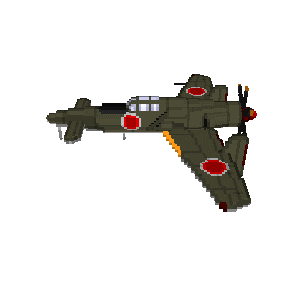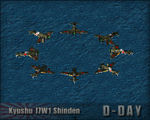Difference between revisions of "Kyushu J7W1 Shinden"
From D-day: wiki
| Line 19: | Line 19: | ||
|content= | |content= | ||
| − | The J7W1 Shinden was an experimental canard fighter plane that was designed to help counter the American [[B-29 Superfortress]] bombers that were devastating Japan's cities. This unique aircraft was proposed by Lieutenant Commander Masayoshi Tsuruno who believed that the canard layout would result in an highly maneuverable and powerful fighter. The basic design was tested with the Yokosuka MXY6 glider | + | The J7W1 Shinden was an experimental canard fighter plane that was designed to help counter the American [[B-29 Superfortress]] bombers that were devastating Japan's cities. This unique aircraft was proposed by Lieutenant Commander Masayoshi Tsuruno who believed that the canard layout would result in an highly maneuverable and powerful fighter. The basic design was tested with the Yokosuka MXY6 glider at the end of 1943 and showed the feasibility of the canard configuration. Work then started on the prototype of the full combat aircraft which was completed in April 1945. The Shinden was ordered into production with an expected 150 a month to be built at two different factories, however only two prototypes were built before the war ended. One of the prototypes was confiscated by the Americans after the war and sent back to the United states for testing, in the 1960s it was given to the Smithsonian Museum and has been in storage since. |
Revision as of 10:25, 31 May 2014
| ||||||||||||||||
History
The J7W1 Shinden was an experimental canard fighter plane that was designed to help counter the American B-29 Superfortress bombers that were devastating Japan's cities. This unique aircraft was proposed by Lieutenant Commander Masayoshi Tsuruno who believed that the canard layout would result in an highly maneuverable and powerful fighter. The basic design was tested with the Yokosuka MXY6 glider at the end of 1943 and showed the feasibility of the canard configuration. Work then started on the prototype of the full combat aircraft which was completed in April 1945. The Shinden was ordered into production with an expected 150 a month to be built at two different factories, however only two prototypes were built before the war ended. One of the prototypes was confiscated by the Americans after the war and sent back to the United states for testing, in the 1960s it was given to the Smithsonian Museum and has been in storage since.
References
. . . .

